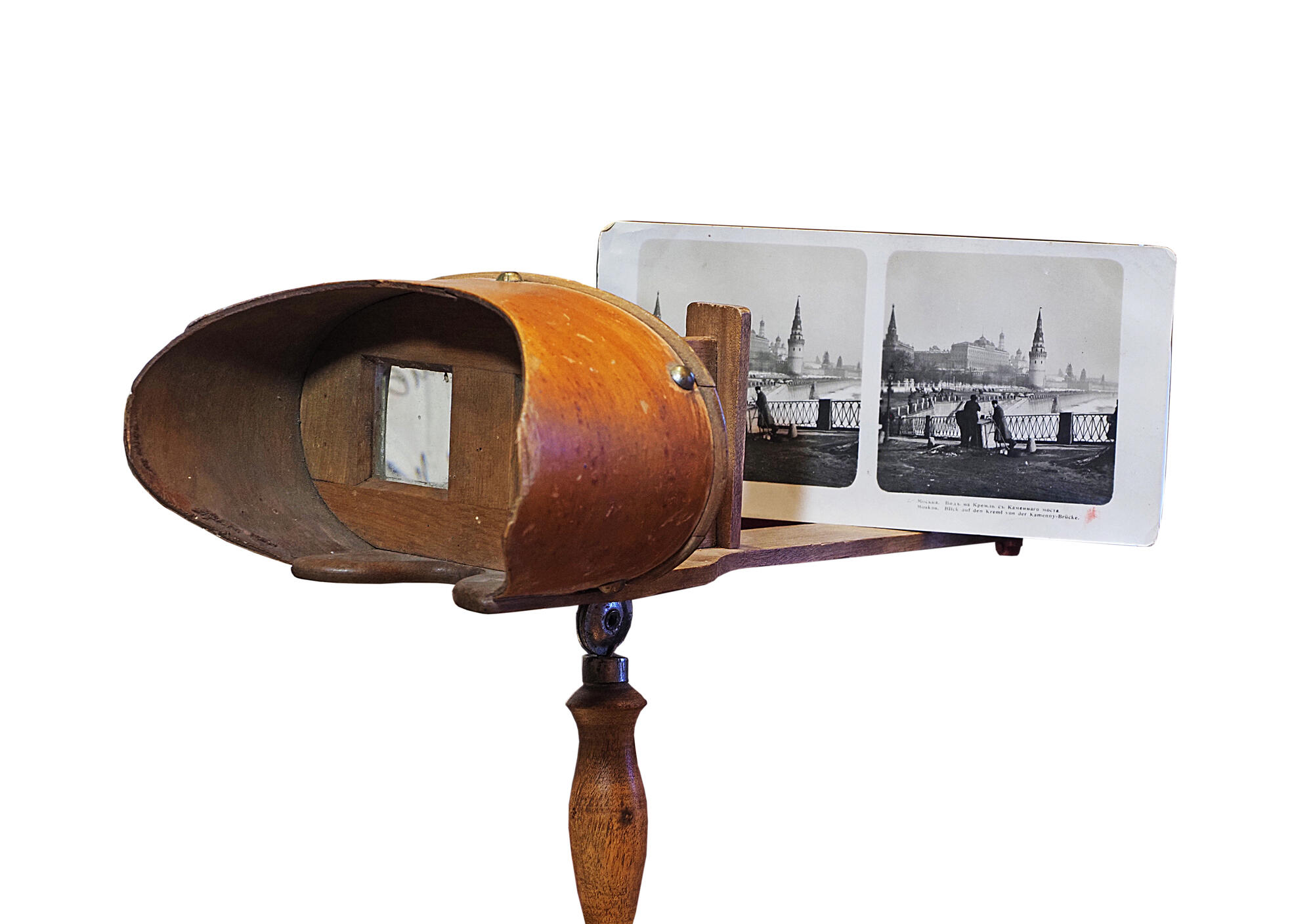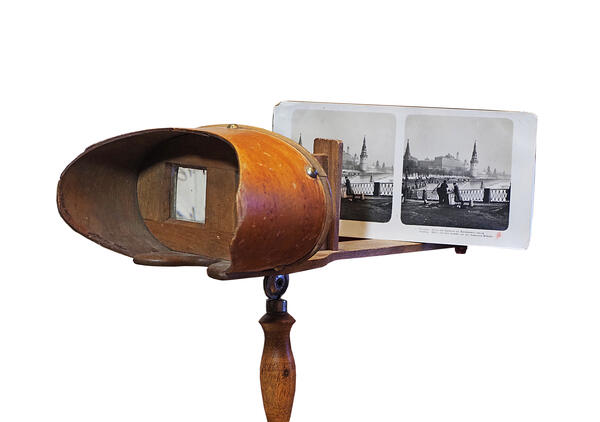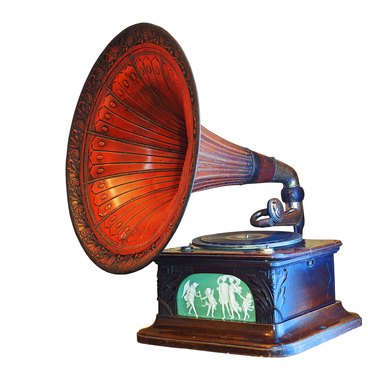According to the Brockhaus and Efron Encyclopedic Dictionary, stereoscope is an ‘optical instrument making two flat images combine in a way that a viewer has an impression of a texturized object’. This binocular device made the photos look three-dimensional.
The appearance of stereoscope took place in 1829 thanks to the maths teacher Elliott. For looking at the images the photos were places into the special compartitions so that the left one would go for the right eye, and the other way round. There the device’s development didn’t stop and in 1849 physicist of the Scottish origin David Brewster put the optical lens into the device, which made it possible to look at the details of the picture with the most possible comfort.
In 1851 French optician Jules Duoscq, the founder of polariscope, bought out a right to the device from David Brewster and introduced it to the broad audience at the World Fair in London. It led to the widespread appreciation of the device and since that moment it appeared at the grocery shelves.
Till 1853 the stereo picture was taken with two different cameras in order to make an effect. Later it was taken with one camera changing the angle for the second picture. The next novelty was the camera with two lenses situated in 2,5’from each other. The two pictures were to be taken at the same time.
Ten years later the American doctor Oliver Holmes and optician Joseph Bates finally upgraded the stereoscope and made it more comfortable in use. The device became so popular it appeared almost in every family.
Thanks to the stereoscope the whole series of pictures on different themes, from family portraits to the views from the different parts of the planet, appeared. Each person got access to any subjects. However, by the end of the 19th century the device stopped being actual because of cinema appearance, but from the 1930s it sparked interest again because of appearance of reversible colour film. From that moment the image could be transported to the diapositive.
This exhibit item was made in the beginning of the 20th century and belonged to the family of Gryazi-Tsaritsyn railway’s worker.


